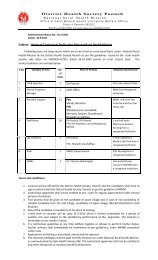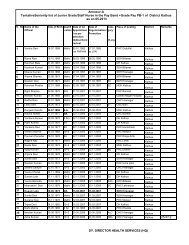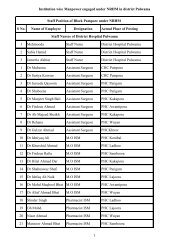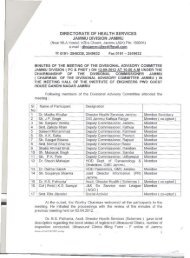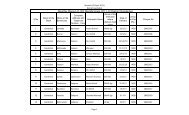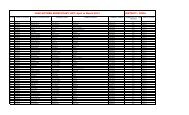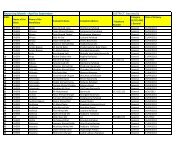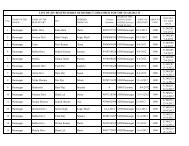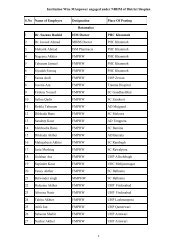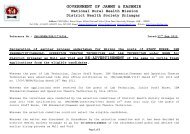Guidelines for Setting Up Blood Storage Centres - NRHM Tripura
Guidelines for Setting Up Blood Storage Centres - NRHM Tripura
Guidelines for Setting Up Blood Storage Centres - NRHM Tripura
Create successful ePaper yourself
Turn your PDF publications into a flip-book with our unique Google optimized e-Paper software.
Collecting <strong>Blood</strong>/<strong>Blood</strong> Components prior to<br />
Transfusion<br />
A common cause of transfusion reaction is the<br />
transfusion of an incorrect unit of blood that was<br />
intended <strong>for</strong> a different patient. This is often due to<br />
mistakes while collecting blood from the blood<br />
storage centre. It is important to follow these<br />
instructions.<br />
1. Ensure proper identification of patient prior to<br />
transfusion.<br />
2. Check that the following details on the<br />
compatibility label attached to the blood pack,<br />
exactly match the details on the patients<br />
documentation:<br />
• Patient’s family name and given name<br />
• Patient’s hospital reference number (I.P.NO)<br />
• Patient’s ward, operating room or clinic<br />
• Patient’s ABO and Rh (D) group.<br />
Whole <strong>Blood</strong><br />
Should be issued from the blood storage centre in a<br />
cold box or insulated carrier (brought from the ward)<br />
which will keep the temperature between<br />
Storing blood products prior to transfusion<br />
Once issued by the blood storage centre, the<br />
transfusion of whole blood, frozen plasma should<br />
be commenced within 30 minutes.<br />
If the transfusion cannot be started within this period,<br />
they must be stored in an approved blood refrigerator<br />
at a temperature of 2° to 6°C, preferably in the<br />
centre shelf.<br />
The temperature inside every refrigerator used <strong>for</strong><br />
blood storage in wards and operating rooms should<br />
be monitored and recorded daily, to ensure that the<br />
temperature remains between 2° to 6°C.<br />
If the ward or operating room does not have a<br />
refrigerator that is appropriate <strong>for</strong> storing blood, the<br />
blood should not be released from the blood storage<br />
centre until immediately be<strong>for</strong>e transfusion.<br />
ADMINISTERING BLOOD<br />
Staff involved in the administration of blood / blood<br />
components should ensure the FINAL IDENTITY<br />
check of the patient, the blood pack, the<br />
compatibility label and the documentation.<br />
2 – 6°C if the ambient (room) temperature is greater<br />
For each unit of blood supplied, the blood storage<br />
than 25°C or there is a possibility that the blood will<br />
centre should provide documentation stating:<br />
not be transfused immediately.<br />
1. Patient’s name on the requisition and that given<br />
on the sample<br />
Should be stored in the ward refrigerator at 2 – 6°C<br />
2. Patient’s ABO and Rh-D group<br />
until required <strong>for</strong> transfusion.<br />
3. Unique donation number of the blood pack<br />
1. The upper limit of 6°C is essential to minimise 4. <strong>Blood</strong> group of the blood pack<br />
the growth of any bacterial contamination in the 5 Compatibility label<br />
unit of blood.<br />
A compatibility label is attached firmly to each<br />
2. The lower limit of 2°C is essential to prevent unit of blood, showing the following<br />
haemolysis, which can cause fatal bleeding in<strong>for</strong>mation. This in<strong>for</strong>mation should be<br />
problems or renal failure.<br />
checked be<strong>for</strong>e administering blood.<br />
29



